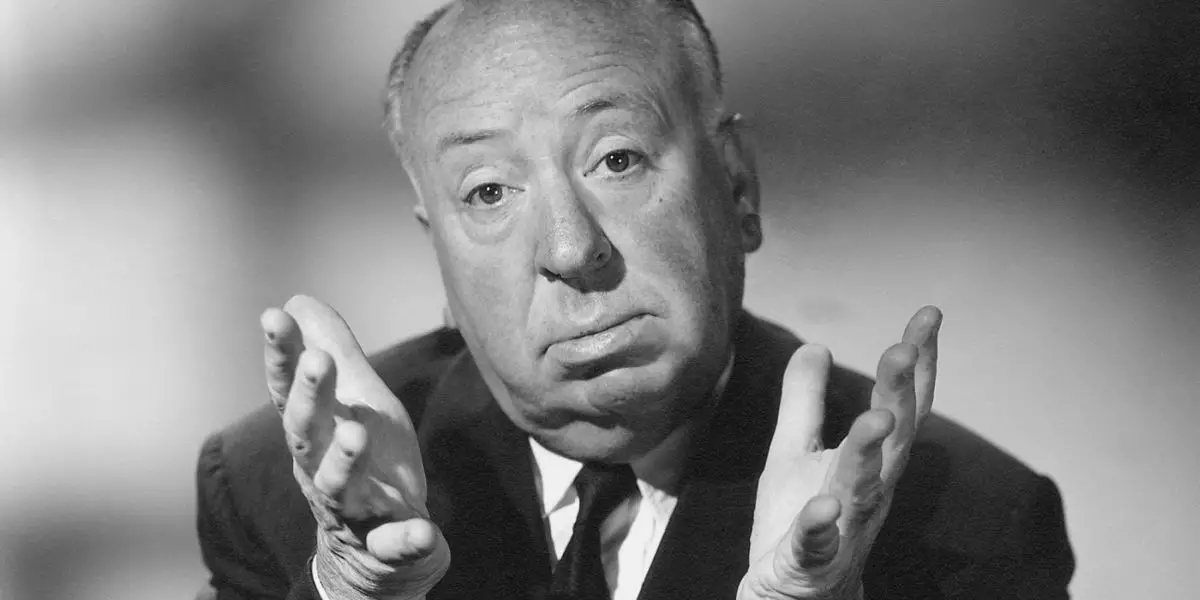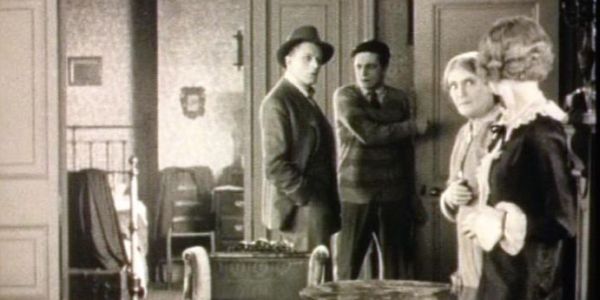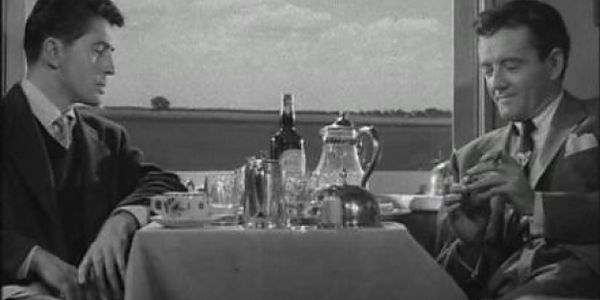The Beginner’s Guide: Alfred Hitchc*ck, Director

Amanda Garrett is a freelance writer with a passion for…
British director Alfred Hitchc*ck‘s reputation as the “Master of Suspense” is still familiar to moviegoers around the world 25 years after his death. Hitchc*ck‘s jowly visage and drawling accent are pop culture fixtures, and his movies are endlessly imitated and even spun-off into popular TV series. However, Hitchc*ck was more than just the man who gave the world Norman Bates and that infamous shower scene in Psycho (1960).
Hitchc*ck’s five decades career began in silent movies and his technical and visual innovations inspired directors as diverse as Jean-Luc Godard and Steven Spielberg. This beginner’s guide will give you a decade by decade overview of Hitchc*ck‘s career and hopefully inspire you to dive into the rich filmography of this master director.
The 1920’s: Beginnings in British Cinema
Hitchc*ck was born Aug. 13, 1899, in Leytonstone, England. His parents, William and Emma, were grocers, and he was raised in a strict household that was devoted to the Catholic faith. Hitchc*ck‘s father was a harsh disciplinarian, and one painful incident in particular left a mark on his psyche that would reveal itself in his films. When Hitchc*ck was five years old, his father sent him to the local police station and had him locked in a cell for 10 minutes for some perceived bad behavior, according to Hitchc*ck biographer Donald Spoto. Hitchc*ck never forgot that incident, and the themes of paranoia and wrongful imprisonment would continually resurface throughout his work.

Hitchc*ck drifted a bit as a young man: he studied engineering, joined the army during World War I, and wrote suspenseful short stories with (surprise, surprise) twist endings for The Henley Telegraph. Hitchc*ck‘s way with words earned him a spot at Islington studios as a writer and designer of title cards. It was a lowly job, but Hitchc*ck learned a great deal about the craft of film making during those early years, and he was especially influenced by the works of the great German directors Fritz Lang and F. W. Murnau. Hitchc*ck was finally given the opportunity to direct movies in 1925. The results are actually quite diverse: Downhill (1927) is the story of a dissolute young man; Easy Virtue (1927) is an adaptation of a Noel Coward play, and The Ring (1927) is a boxing/love story.
However, Hitchc*ck found his genre with The Lodger (1926), a movie about an innocent man (Ivor Novello) accused of being Jack the Ripper that many critics consider the first true Hitchc*ck film. The Lodger contains Hitchc*ck’s signature visual flair and his continued theme of an innocent man accused of terrible crimes.
The 1930’s: Defining the Hitchc*ck Style
Hitchc*ck survived the transition to sound movies in the late 1920’s, and beginning in 1934 he made a series of thrillers that defined his style and gave him an international reputation. Three of these films — The 39 Steps (1935), The Man Who Knew Too Much (1936) and The Lady Vanishes (1938) — are masterpieces that defined Hitchc*ck‘s obsessions for the rest of his film career.
The 39 Steps in particular is the definitive Hitchc*ck movie. The plot is rather complicated, but it contains the familiar Hitchc*ck motifs of an icy blonde ( Madeleine Carroll) and an innocent man as they get caught up in a web of intrigue (Robert Donat). The 39 Steps also involves Hitchc*ck’s favorite movie device, the MacGuffin. In his interviews with Francois Truffaut, Hitchc*ck defines a MacGuffin as some sort of object – it can be anything from luggage to, as in the case of The 39 Steps, stolen design plans – that endangers the hero’s life, but never has any real onscreen explanation.
The 1940’s: America and Experimentation
Hitchc*ck‘s British films were international blockbusters. Hollywood took notice, and in 1940 Hitchc*ck, his wife, Alma, and daughter, Patricia, moved to California to begin his American career. Hitchc*ck made two significant films in 1940: Rebecca, an adapatation of Daphne du Maurier‘s Gothic suspense novel, and Foreign Correspondent, a visually stylish thriller about foreign spies in Great Britain (the film implies these spies are Nazis). Hitchc*ck was never a comfortable fit within the old Hollywood studio system where directors were essentially hired hands under the control of all-powerful producers, but Hitchc*ck still made some great movies during the 1940’s.

His three best forties movies are quite different films that still have Hitchc*ck‘s distinct touches. Shadow of a Doubt (1942) takes on small-town America with a story about a young girl (Teresa Wright) who suspects her uncle (Joseph Cotten) of being a serial killer. Notorious (1946) is Hitchc*ck’s take on Casablanca (1942) with Ingrid Bergman infiltrating a Nazi group by marrying its leader (Claude Rains). Spellbound (1945) is a psychological thriller that plumbs Hitchc*ck‘s fascination with psychoanalysis. This movie, featuring Gregory Peck as amnesia patient who may be a murderer, contains a dream sequence with surrealist art from Salvador Dali that is about the trippiest thing you will ever see in a major old Hollywood production.
The 1950’s: The Master of Suspense
Hitchc*ck began working for Warner Bros. in 1950, and the movies he made during this decade for both Warners and Paramount Pictures are some of the best films ever produced in old Hollywood. Hitchc*ck began the decade with his contribution to film noir, Strangers on a Train (1951) and he continued churning out hit after hit for the rest of the decade with his two favorite leading men, James Stewart and Cary Grant. Although these movies were box-office bonanzas, they were still highly personal statements that dealt with Hitchc*ck‘s obsessions, ranging from voyeurism (Rear Window) to wrongful imprisonment (The Wrong Man).

The two best films of Hitchc*ck‘s career came in the late 1950’s: Vertigo (1958,) starring Stewart as a former police detective who is obsessed with a dead woman, is frequently voted one of the best movies of all time while North by Northwest (1959) is a breezy update of The 39 Steps featuring Grant as an ad man who is pursued by a mysterious organization.
The 1960’s: Pushing Boundaries
Many of old Hollywood’s great directors were either retired or had died by the 1960’s. Hitchc*ck continued pushing the boundaries of cinema with the graphic violence in The Birds (1963) and the groundbreaking sexuality in Marnie (1964). Psycho, made on a shoestring budget in 1960, is certainly Hitchc*ck’s best known film and probably his most influential. The famous shower scene shocked sixties audiences, but its groundbreaking style influenced the slasher/horror genre that would become quite popular in the 1980’s and 1970’s.
Hitchc*ck continued to make interesting movies well into the 1970’s, and he was working on a script when he passed away from renal failure in 1980.
In your opinion, what is the best Alfred Hithc*ck film? Where do you think Hitchc*ck ranks among cinema’s great auteurs?
(top image source: unknown)
Does content like this matter to you?
Become a Member and support film journalism. Unlock access to all of Film Inquiry`s great articles. Join a community of like-minded readers who are passionate about cinema - get access to our private members Network, give back to independent filmmakers, and more.
Amanda Garrett is a freelance writer with a passion for classic films. You can catch her writing reviews and features at Film Inquiry or at her website, Old Hollywood Films.













